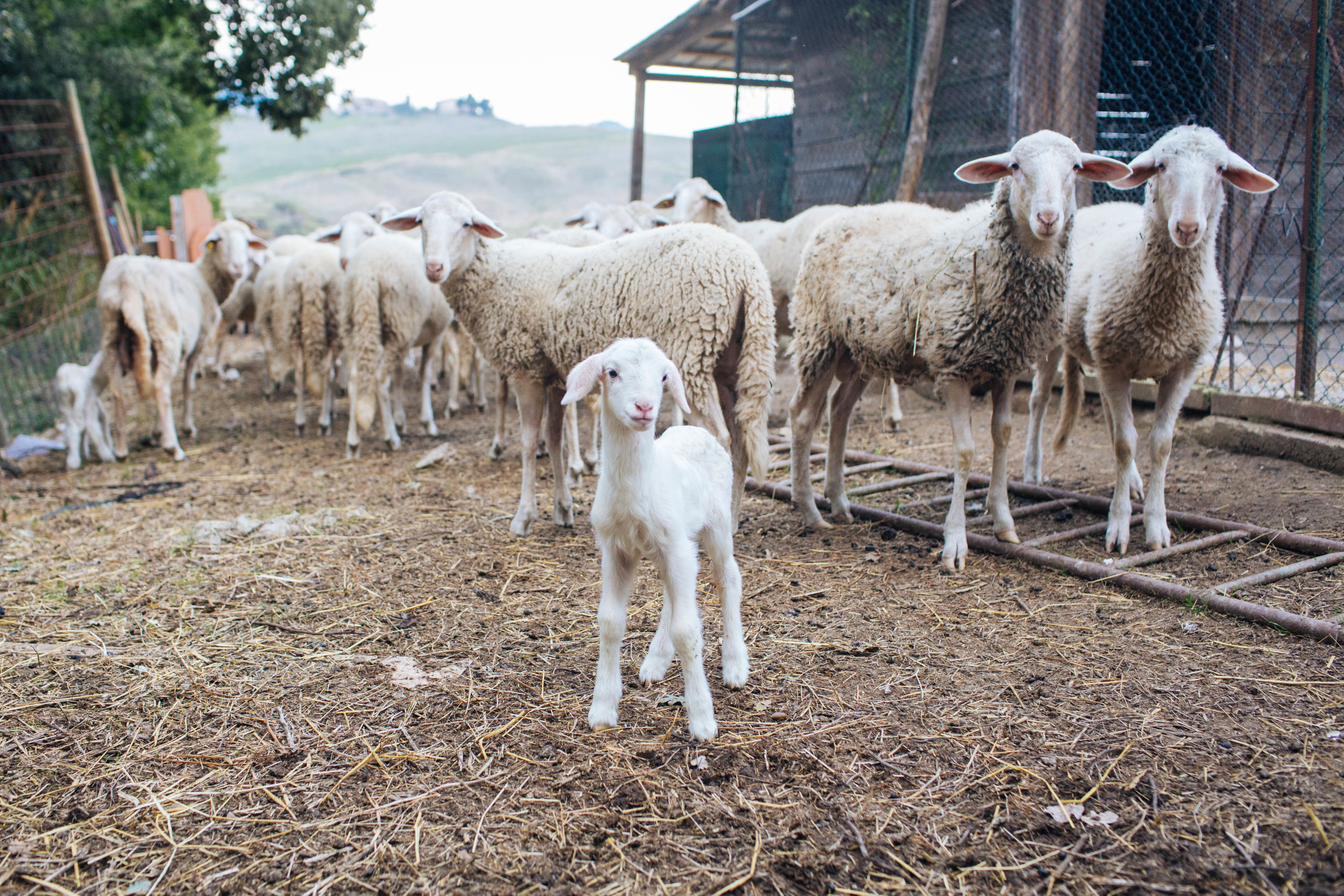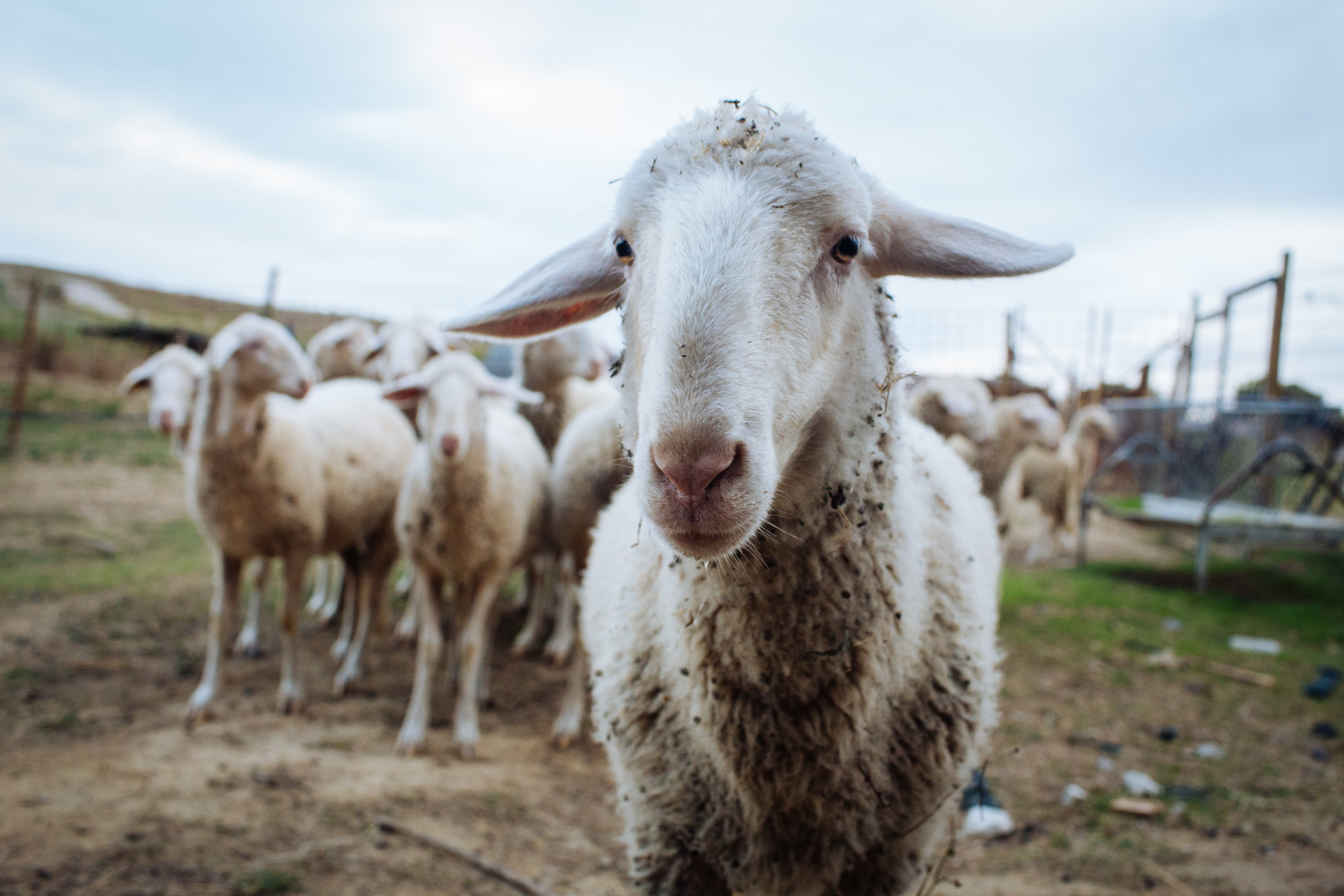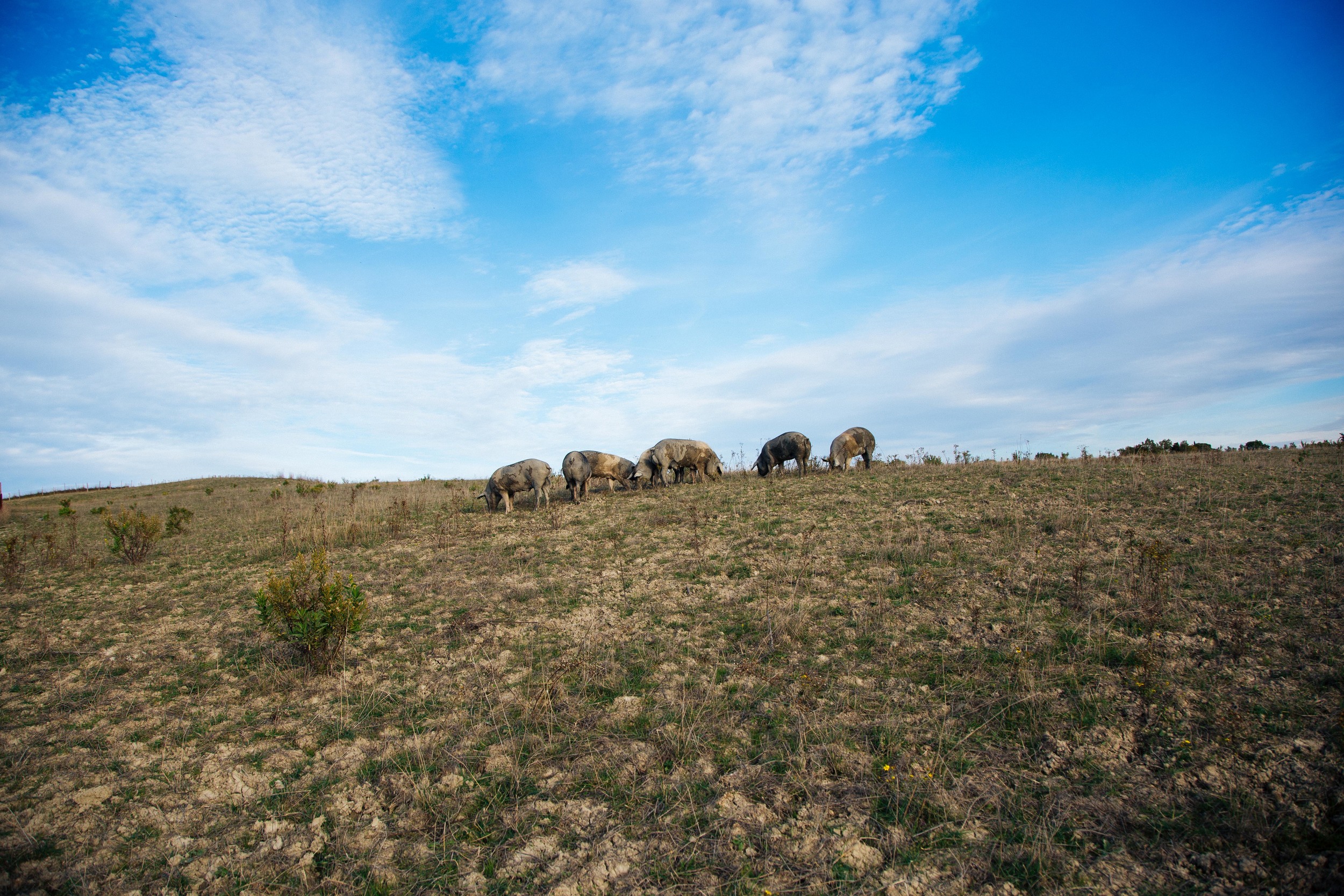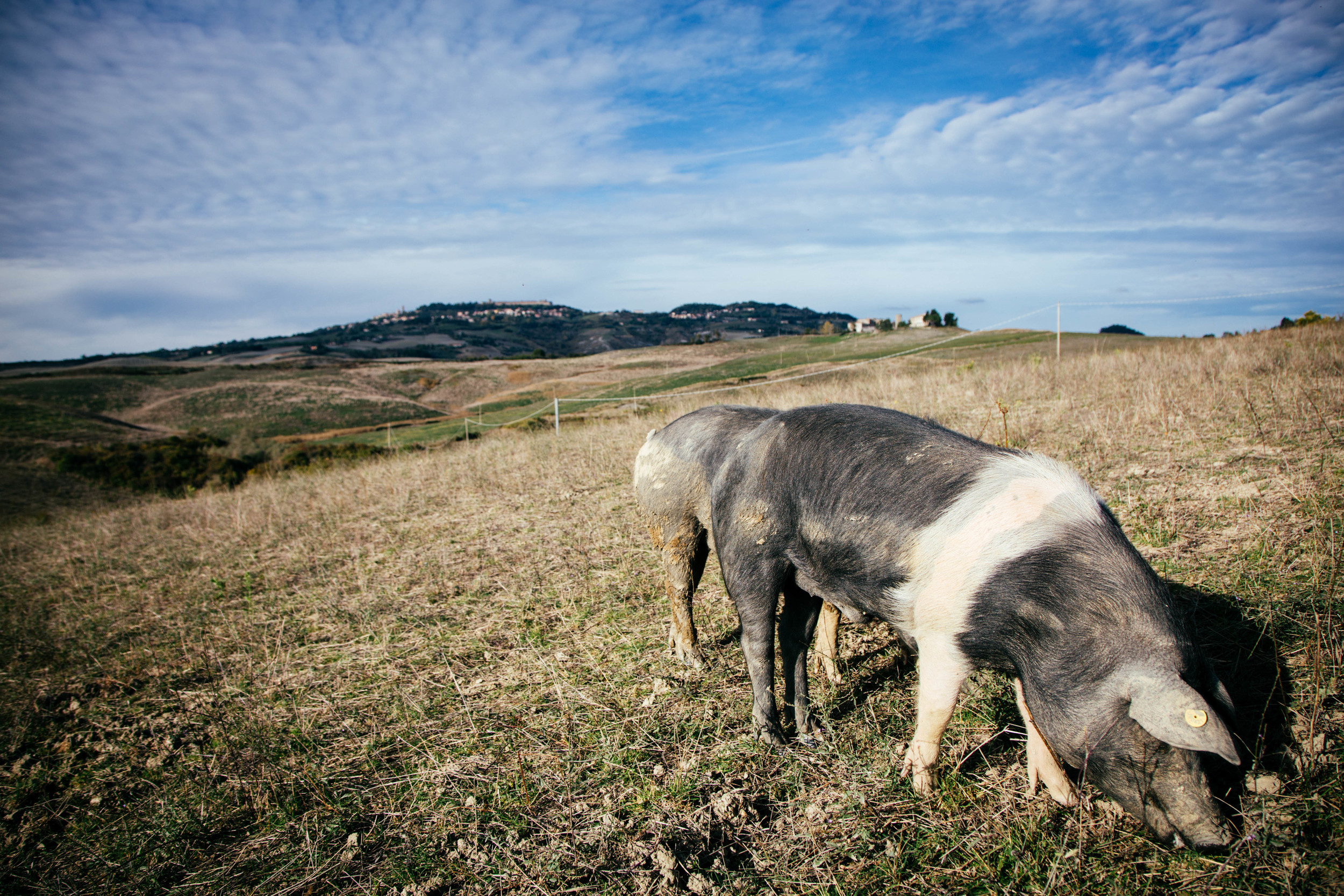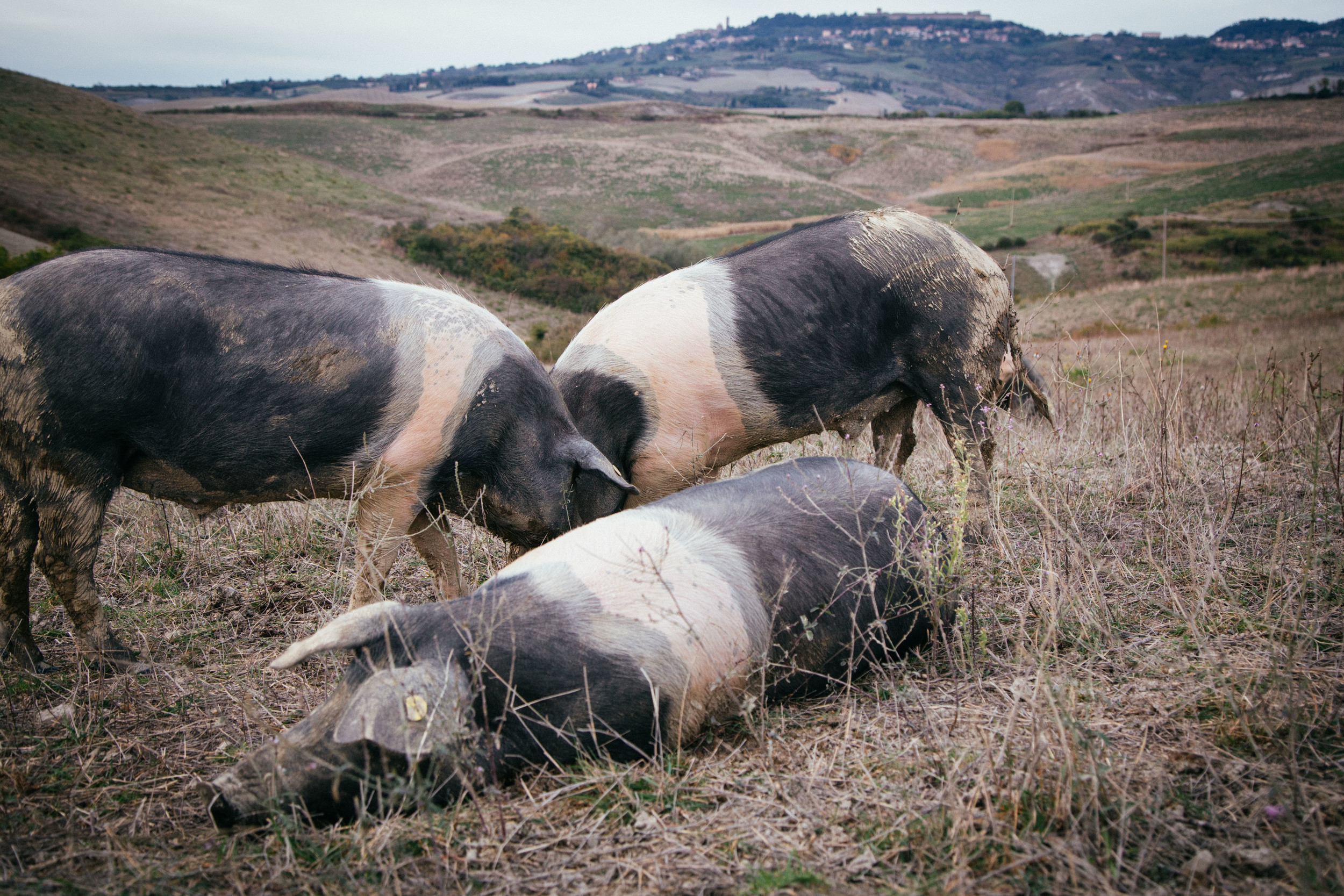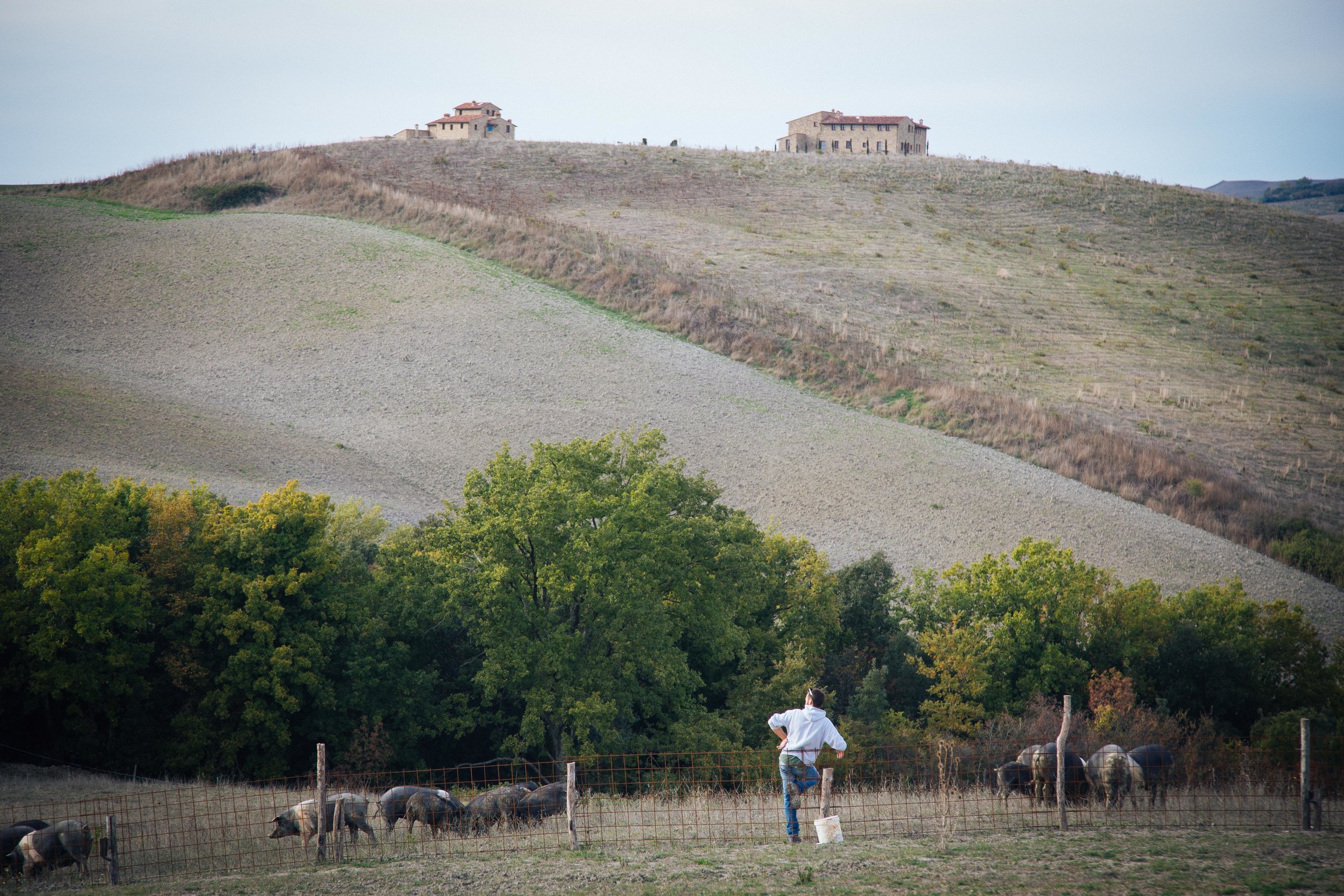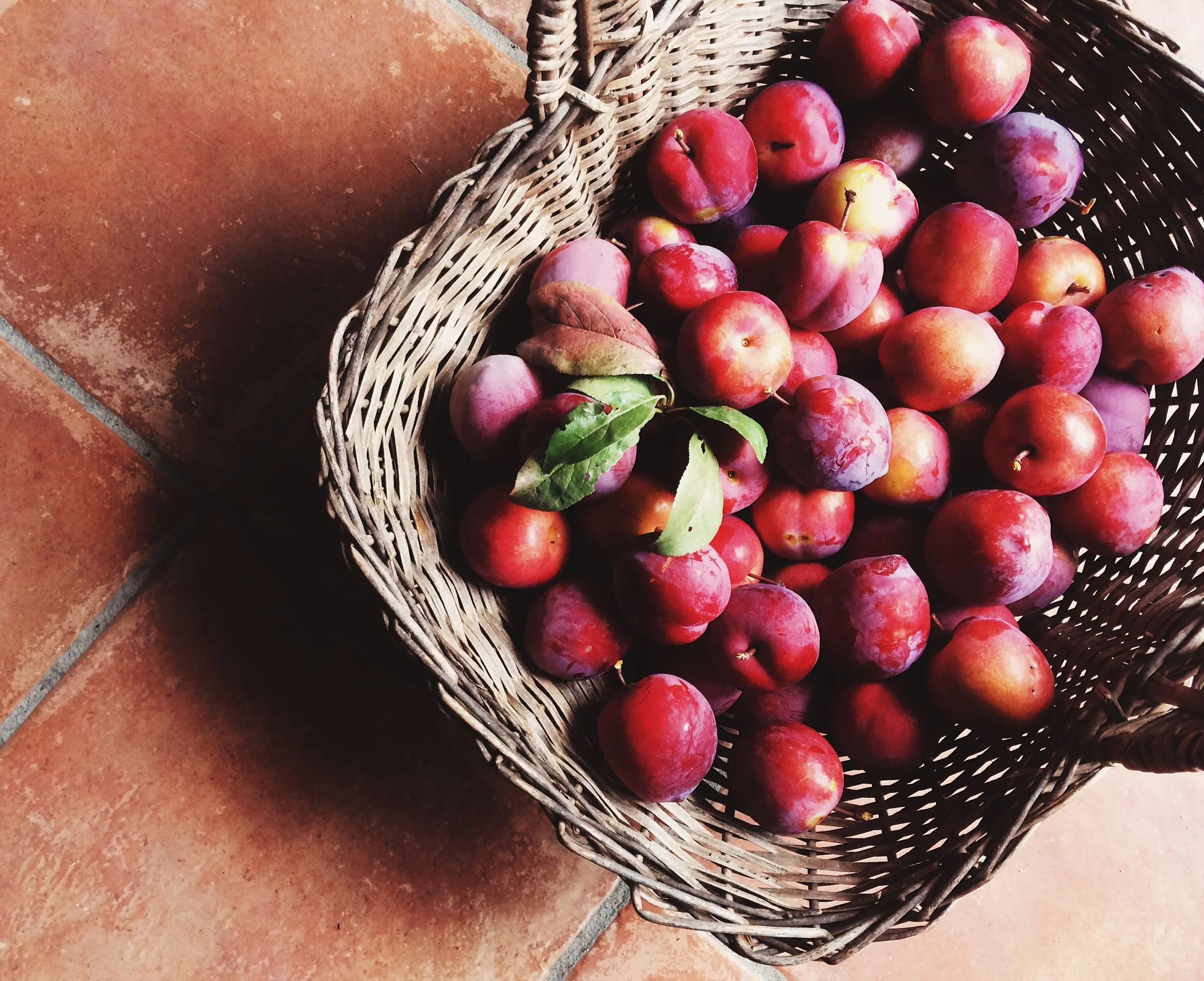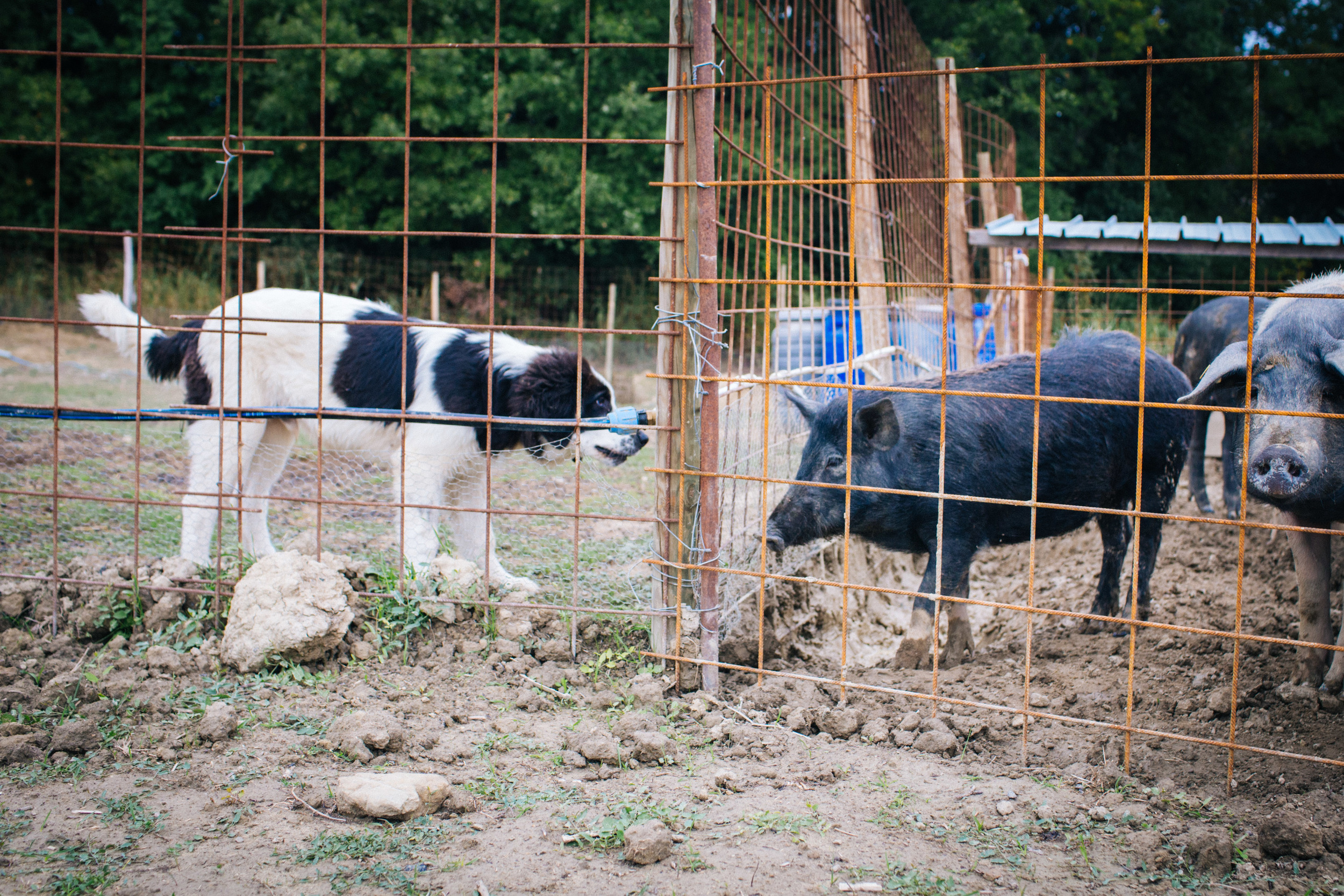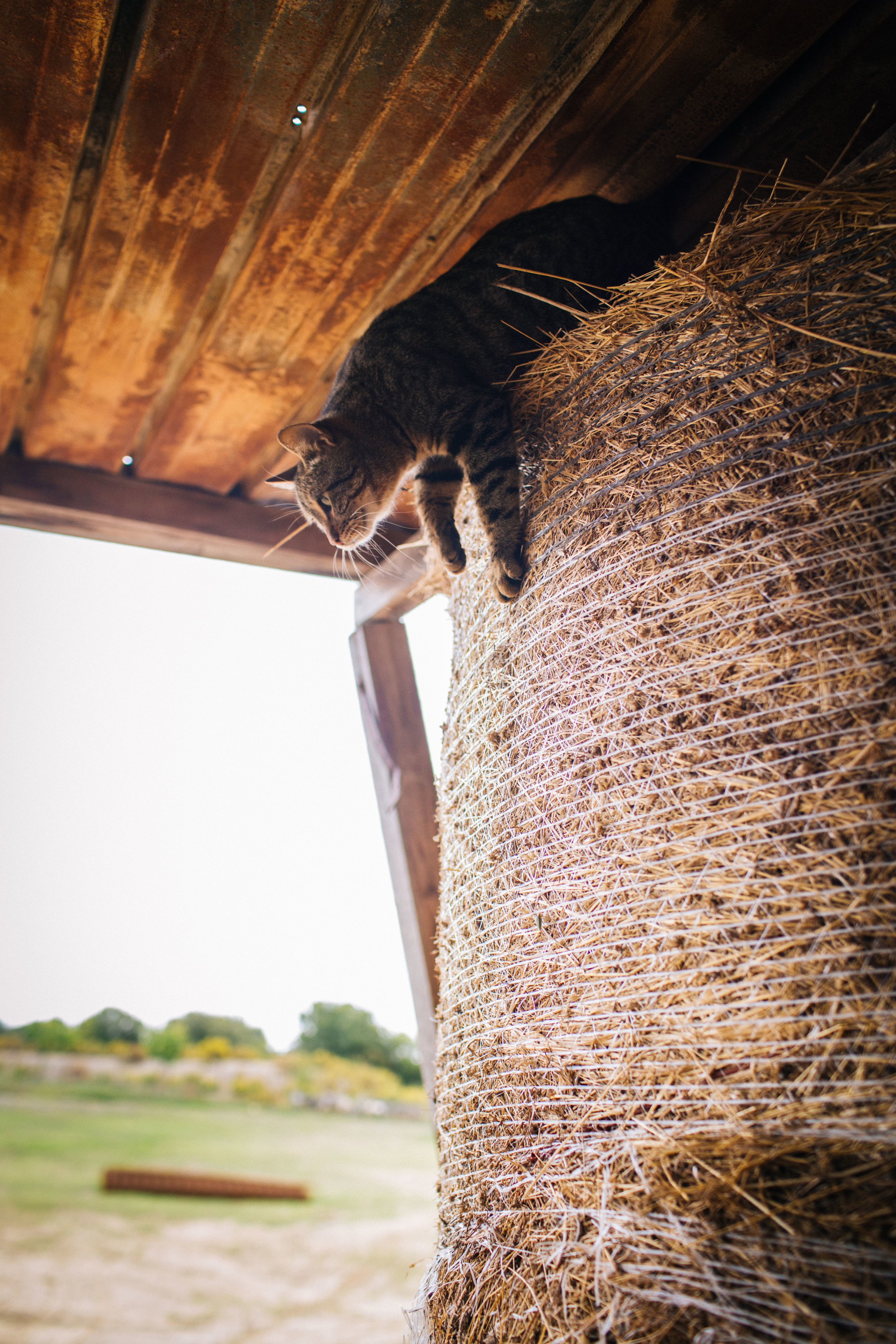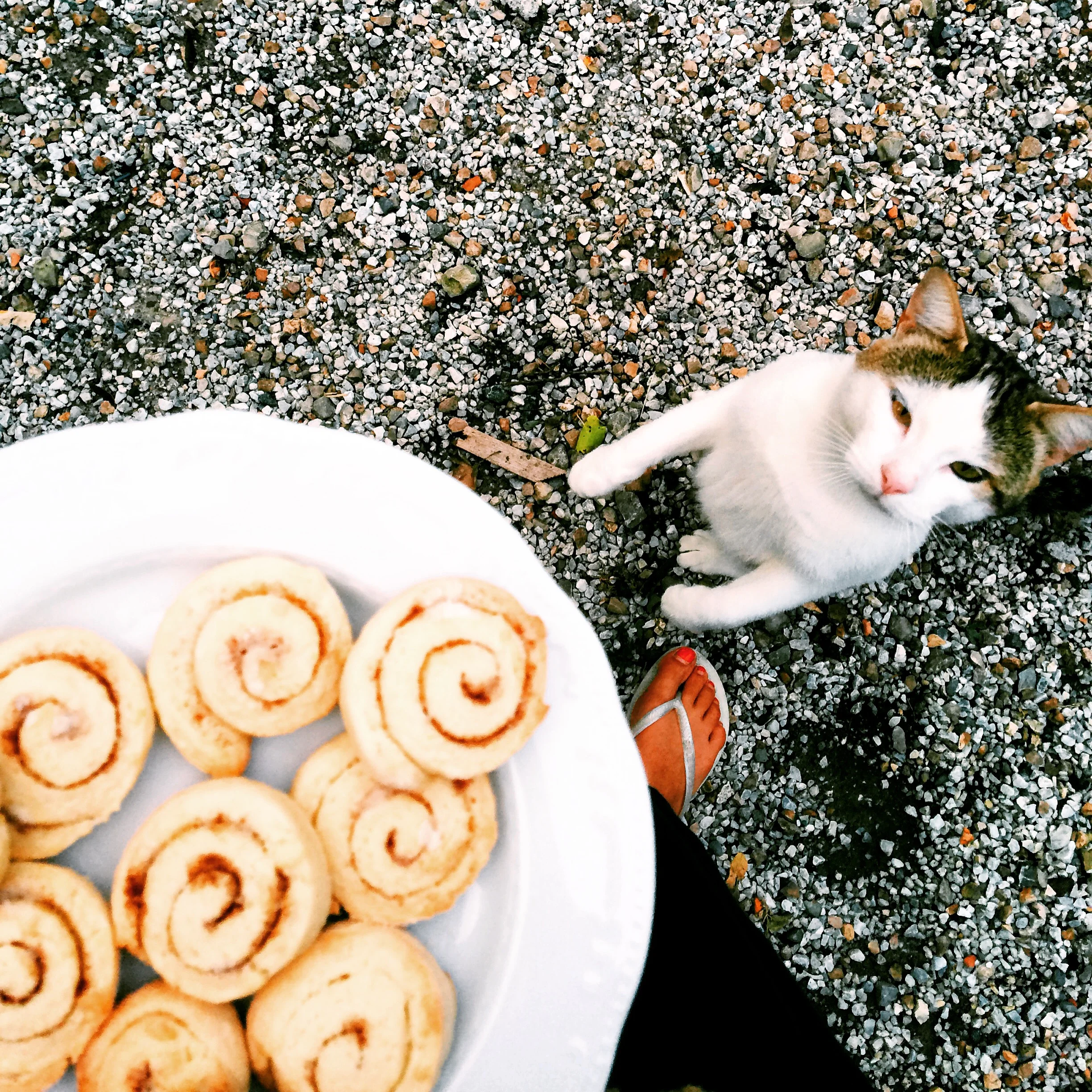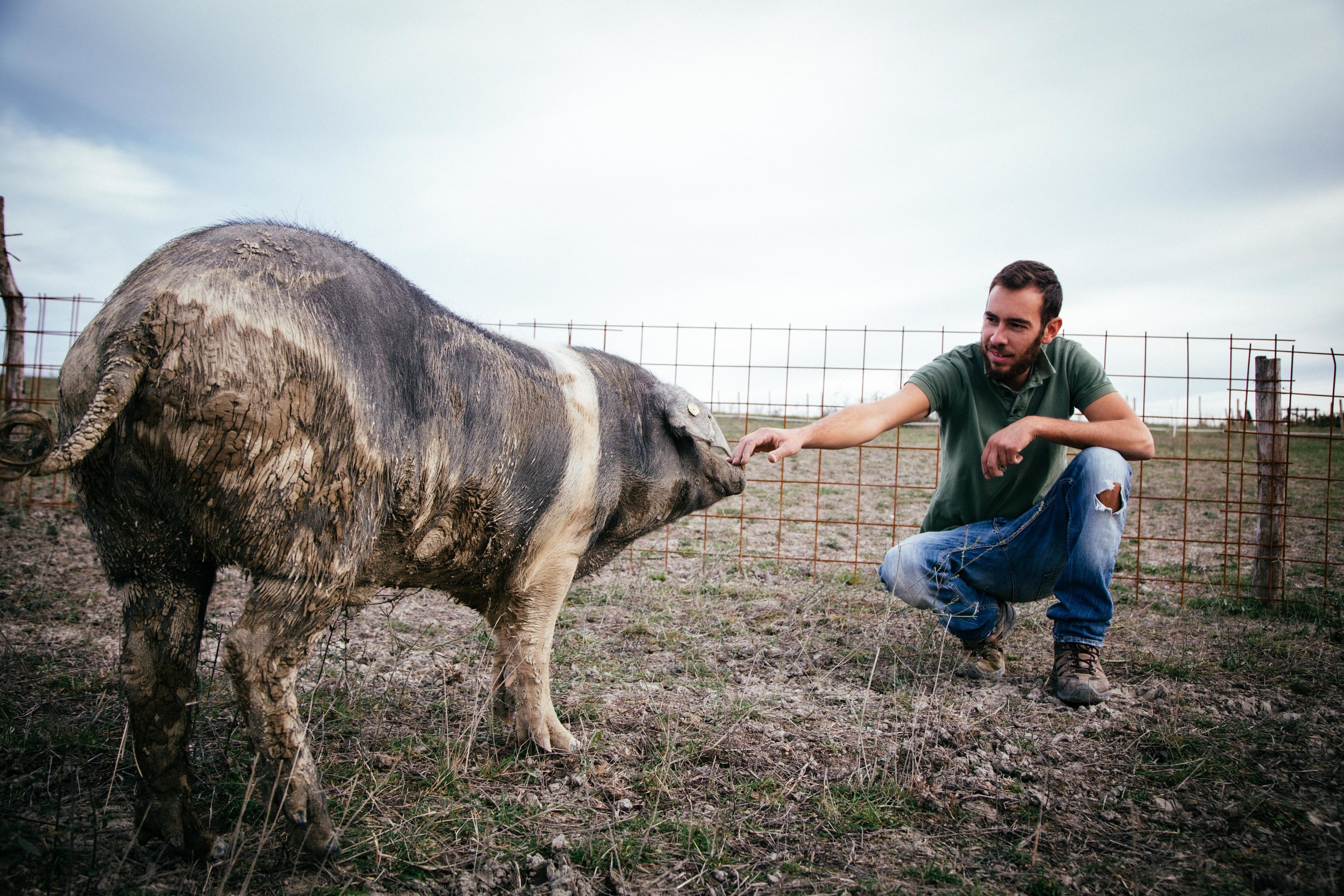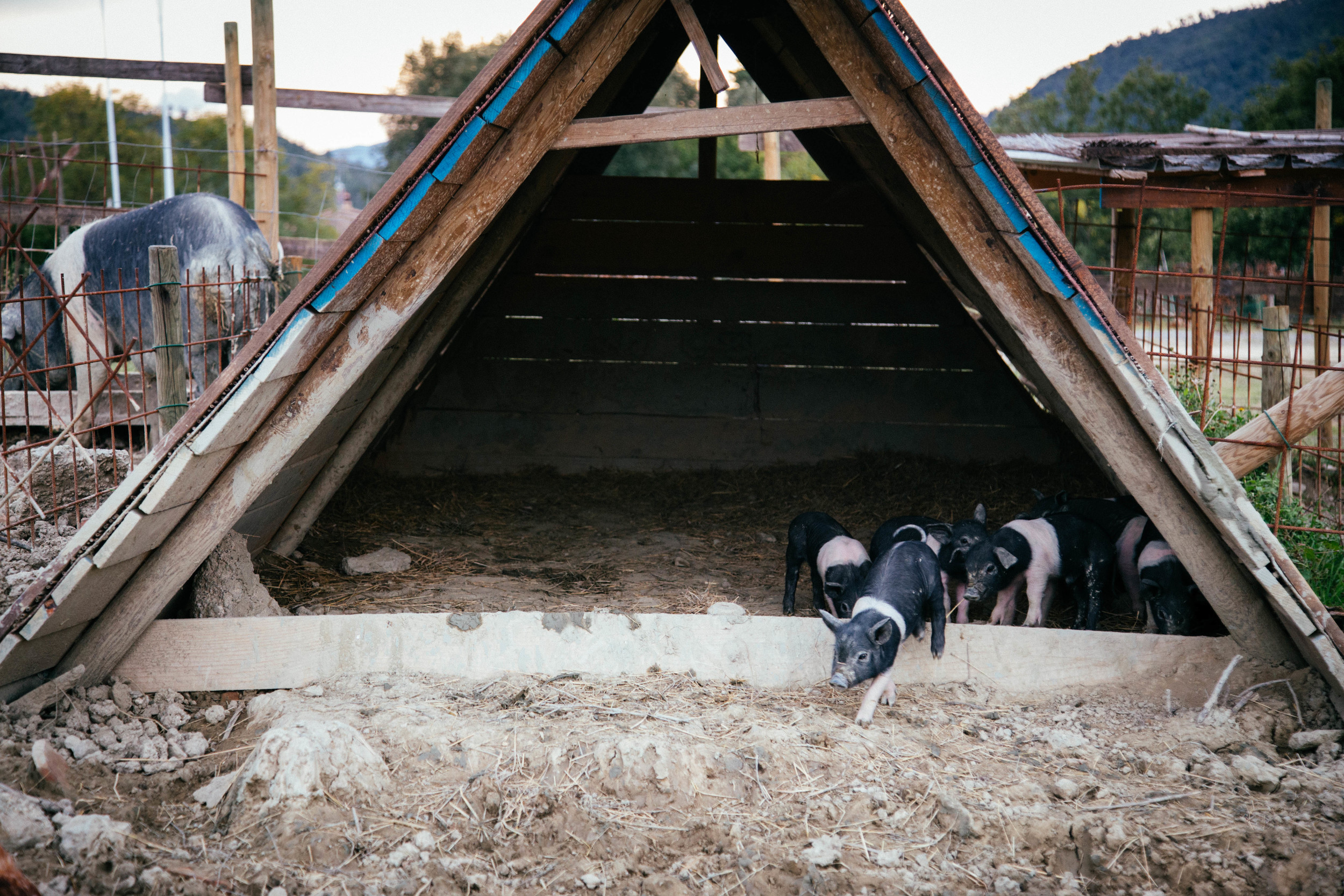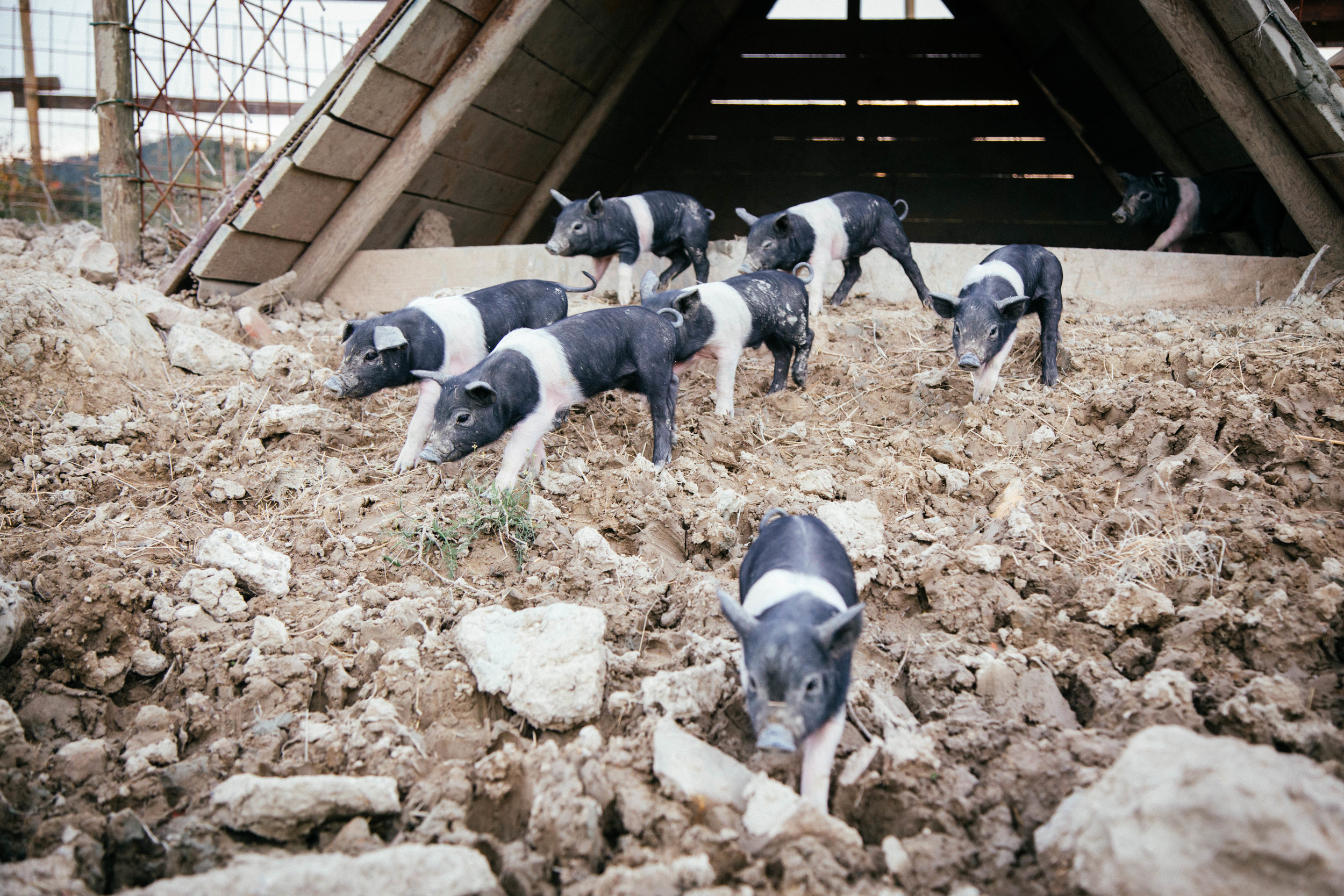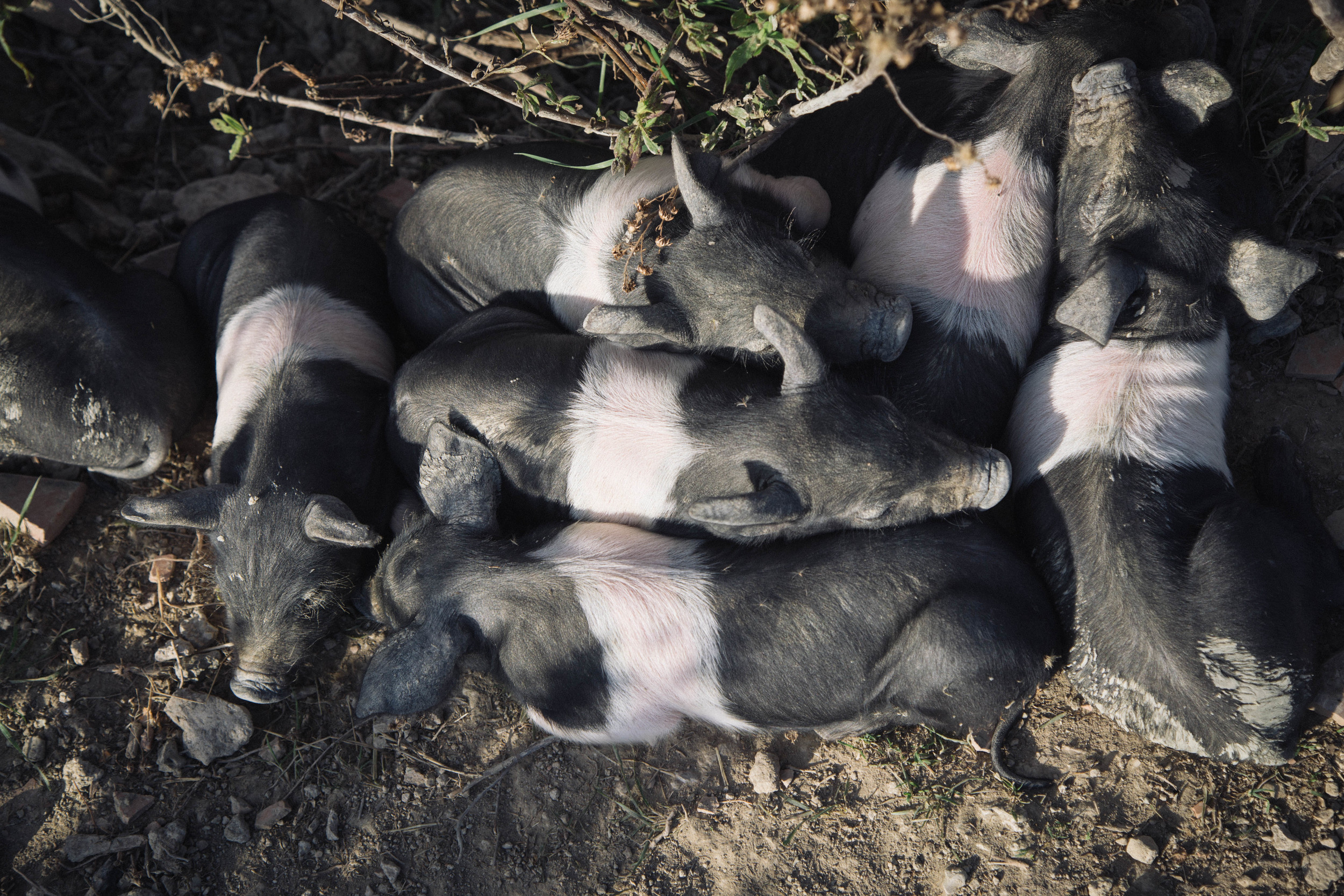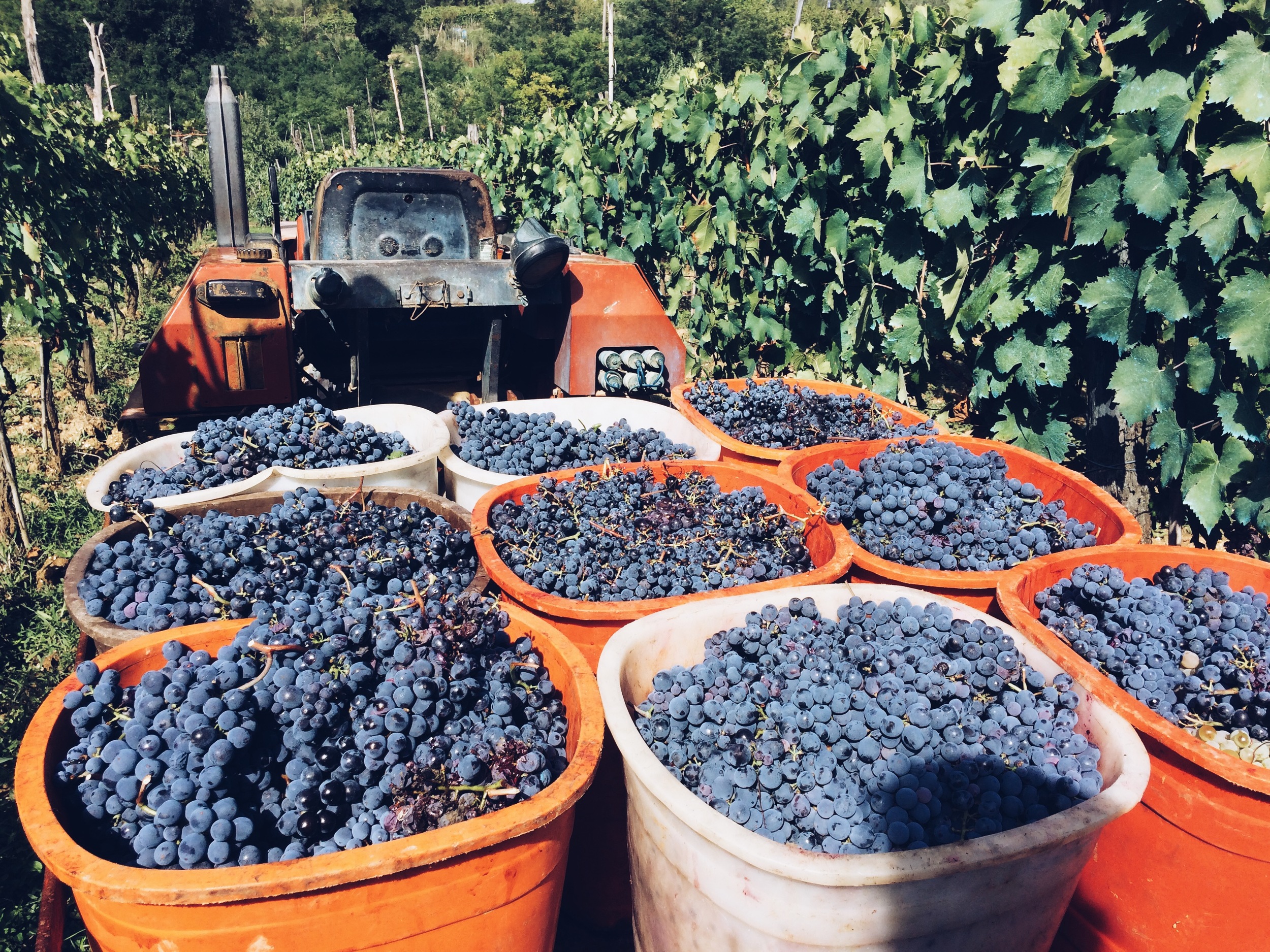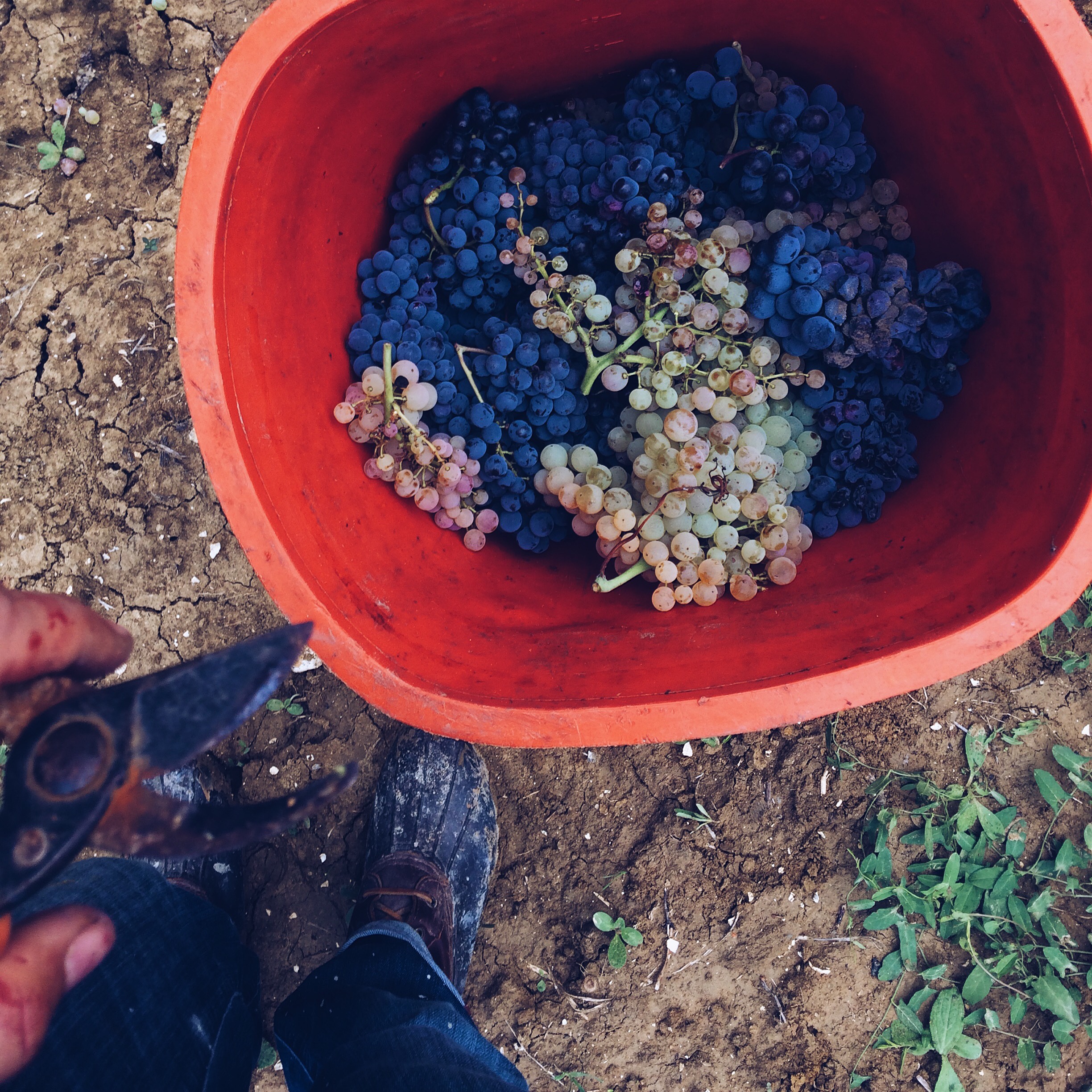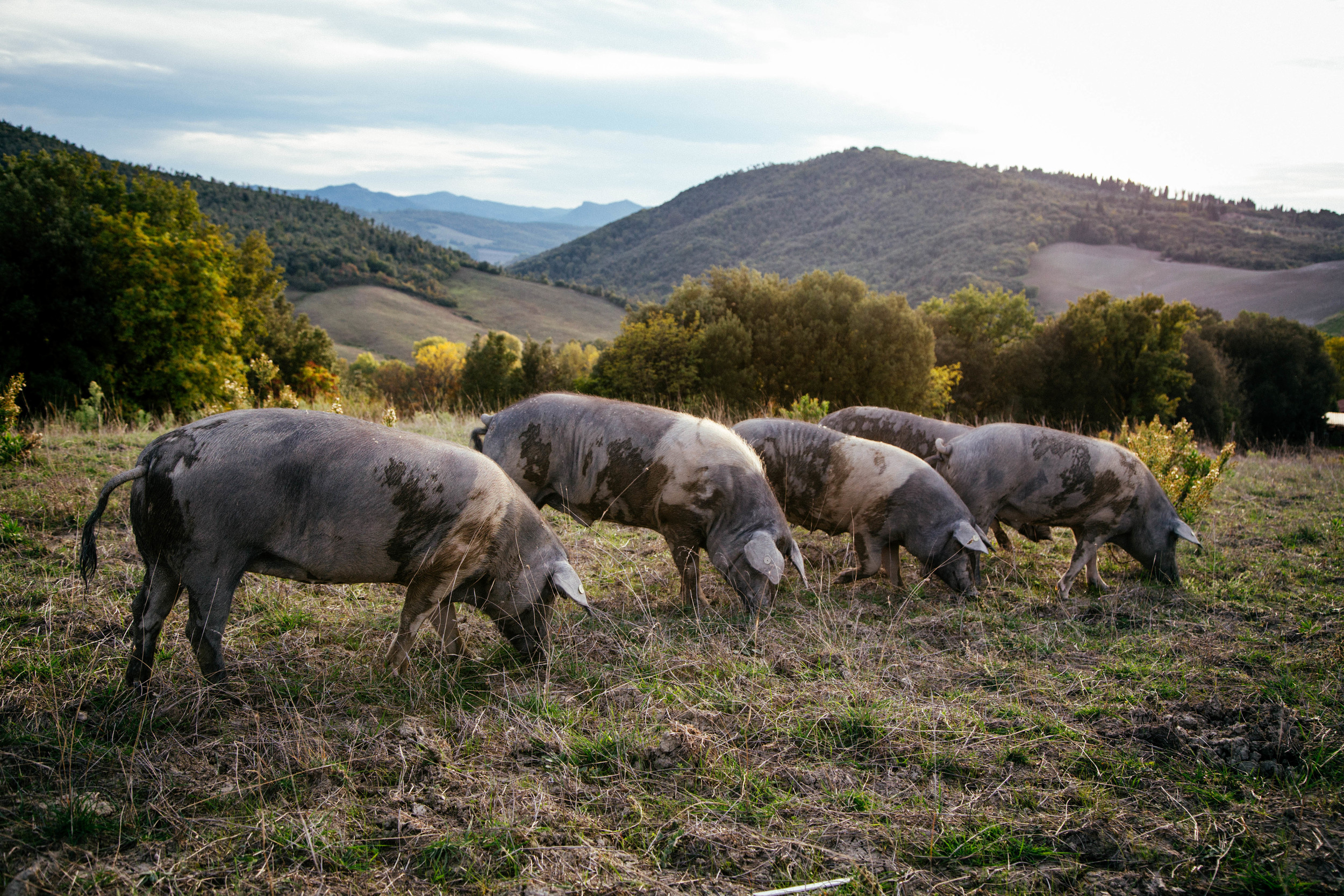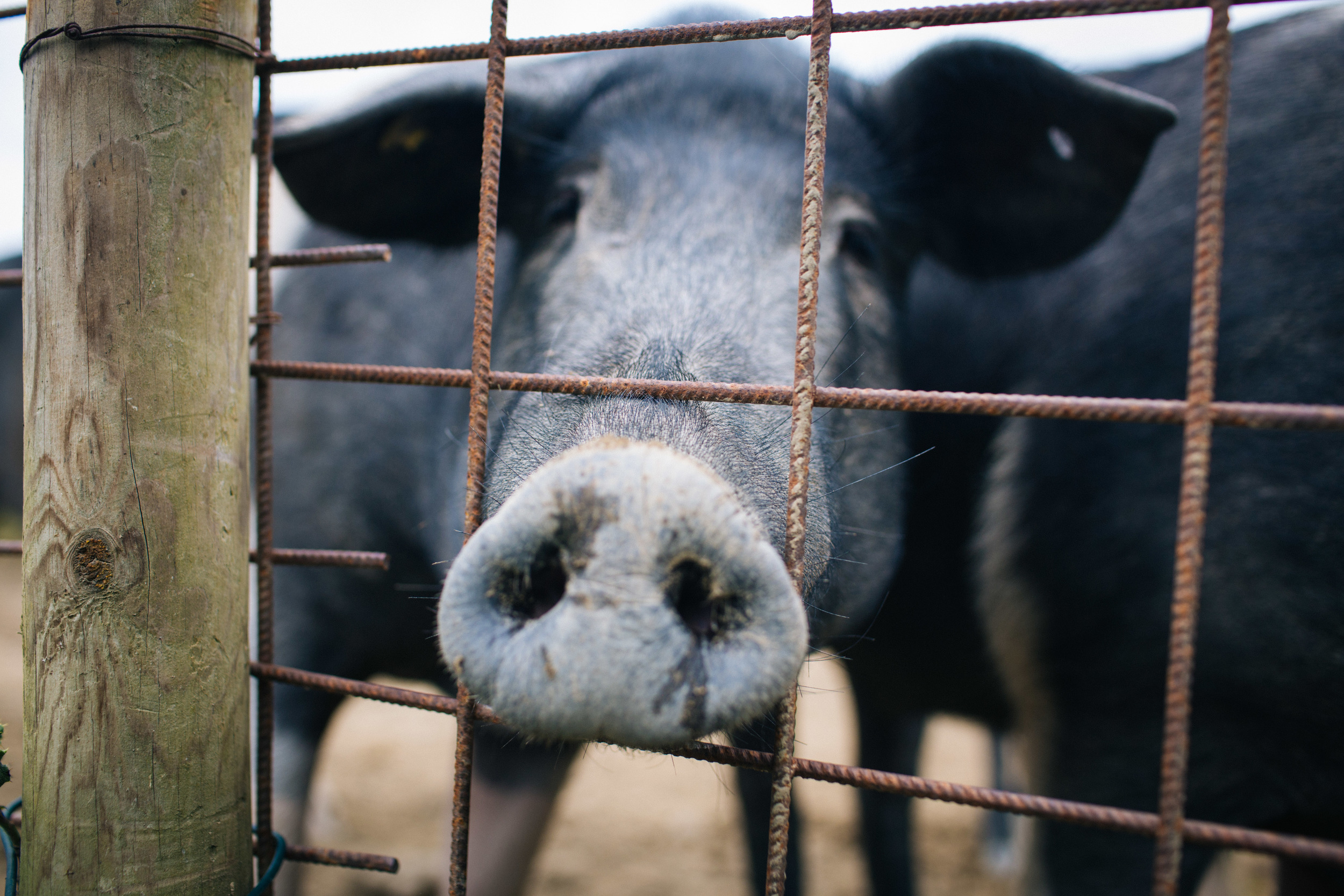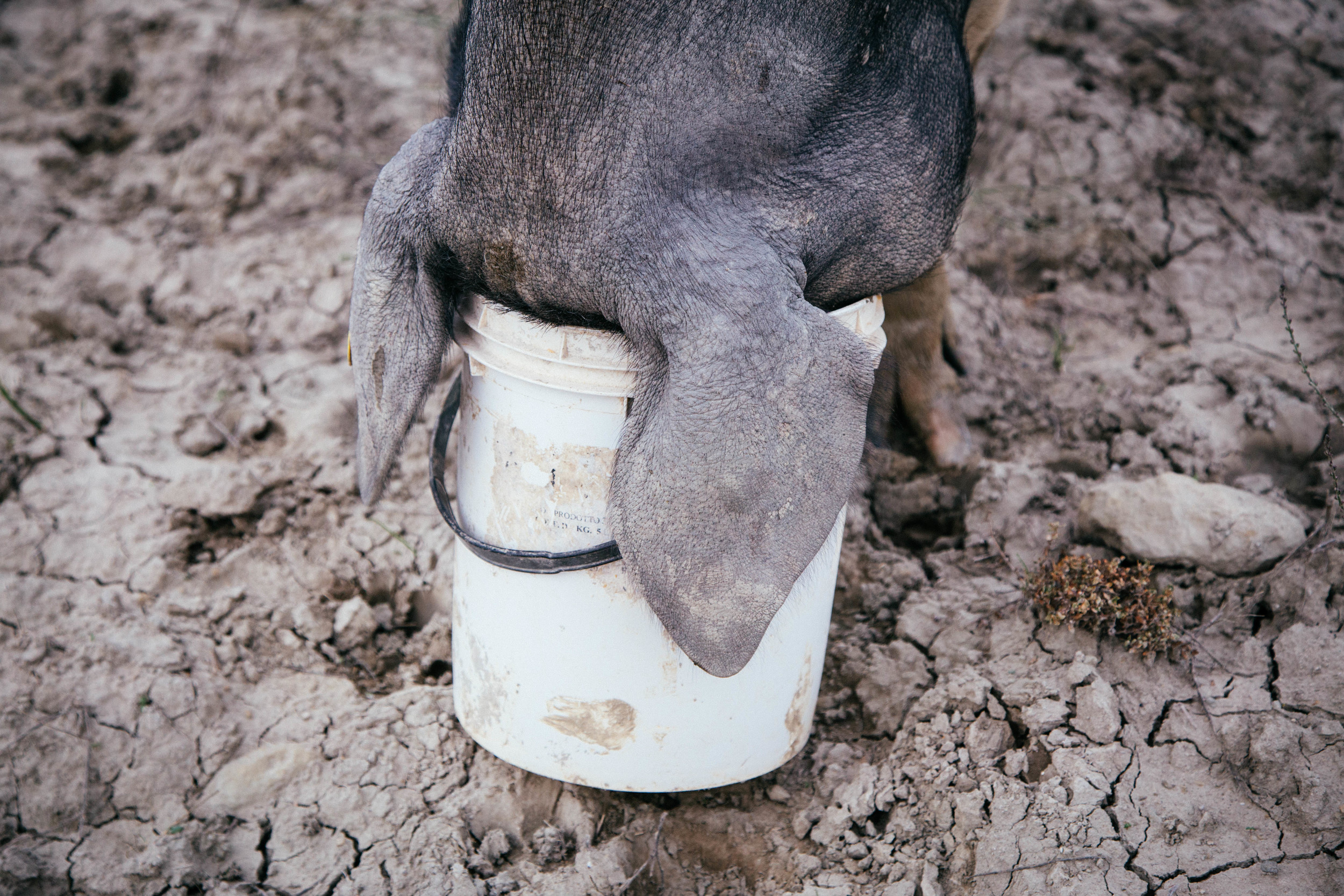Every morning, I am greeted at my fogged up door from the breath of two cats and two dogs who are both eager for attention and food. The cats, perfect opposites of each other, clearly try to reconcile how to be both domestic felines, dependent on the food given to them each morning, and rustic terrors of mice, responsible for keeping the farm clean and rodent-free. The male cat, fat and lazy, has decided to dedicate his life to being fed and petted, and tends to rule the bowl at feeding time. The other cat, a smaller female, has made due with the situation by becoming the more athletic hunter, wandering the farm throughout the day and night. For this, she has the respect of the family.
The two dogs, Otto and Asia, also play contrasting roles. Otto, bred to be a dominant sheep herder, has decided that being a playful puppy is far more fun, and in his first 4 months of life, escapes the sheep pen whenever he can to roll around with his human colleagues. Now, he is beyond reprimand--an adorable Pastore dei Carpazi whose puppy fur still stands atop his head, and whose gait still resembles a new born deer. The only one he remains inferior to is his counterpart, Asia, who remains the fierce boxer and ruler of their territory. They are like toddlers in their understanding of dominance and space. If Asia likes a toy, Otto wants it. And if Otto wants it, Asia makes it very clear that he can't have it. The game restarts once Asia has lost interest in the toy, and thus Otto moves on as well.
Asia escorts me to the oldest pigs first, where she is only brave enough to bite their ears when there is a fence separating her from a 300-pound pig, hungry and large enough to crush her if it wanted to. The pigs are the breed Cinta Senese, and have been a part of this Tuscan landscape since the year 1300 (you can see Cinta Senese in royal paintings of that time). Their existence nearly evaporated in later years before the Tuscan government reintroduced them and encouraged farmers to raise them again in the 1970s. Now they're celebrated as the regional pig of Tuscany, famous for the way their meat is naturally marbled with fat, its texture and flavor unique and delicious. The oldest Cinta Senese, who are next in line to be slaughtered for salumi in November, can smell the approach of their feeder (me), and will run as a herd to the gate to greet me, climbing over each other to get in. We put food in their pen the night before, so as to make the morning process more swift, as the ears can only take so much of their eardrum-bursting squeals of hunger in the morning. I ensure you though, these pigs are well fed. The farm follows the rules of the DOP, Denominazione di Origine Protetta, which says that Cinta Senese farmers must feed their pigs a combination of what they produce (in this case we feed them our ancient cereals, which we also use to make our own pasta and flour) and whatever the pigs find naturally in the forest and on the land. Cinta Senese farmers are only allowed to feed them once per day--then they must forage on their own for the rest of the day. But pigs will always eat if they smell food, and nothing tickles their nose quite like the grain I feed them each day. When I open the gate, it's important to stand clear of the way, as hundreds of pounds of might and hunger rush by me. Then, a negotiation ensues as each pig looks at their helping, wanders around to make sure no one else has more than they do, and finally settles to eat.
I next visit the teenage pigs, whose pen is now shared with the litter of half breeds, whose mother, a Cinta Senese, was approached by a wild boar roaming the nearby forests. You can imagine the surprise of the family when they found a litter of half wild animals; (there is a bull for breeding here, usually responsible for this job, but it remains to be known how he felt about this occurrence). The tame teenage Cinta Senese and the baby wildings don't quite get along, as the babies nibble and bite, try to drink the pee of their cousins, and crawl over each other for food. Perhaps they are a bit too wild, though I think both parties have come to terms with their cohabitation. Even so, their shrills of hunger in the morning are deafening. One can't imagine what a lot of hungry pigs sounds like, though to give you an idea, take any torture scene from Game of Thrones, and multiply it by 21, which is how many pigs eagerly await my arrival at this pen each morning.
With the greediest animals out of the way, my morning calms down. I visit the two pregnant Cinta Senese, who now reside in their own luxury suites--almost an acre for each to walk, eat, and sleep comfortably without the pressure of the other pigs. They each have their own little house to sleep inside when it rains, and a private mud hole to rest in. I found one of the mothers, due any hour now, calmly laying in her mud hole as if she were in a multi-jet Jacuzzi. Her eyes were half closed, her breathing a little shorter, but content nonetheless. ***
The sheep at this point know that I am around, but patiently wait their turn to feed. They don't complain, or whine, but their curiosity is far greater than their timidness to resist, and so they will send one out to me to scout the situation for food. If their pal stays, the rest know they can proceed to food, but if it turns and runs, there is no hesitation to follow as a group. They are the breed Razza Di Agnello Pomarancino, who were originally found here in Tuscany, though in which year no one really knows. Most of the sheep we recognize in Italy are a race originally from Sardinia, who are raised, and well known, for their milk for the pecorino cheese. The Razza Di Agnello race of sheep we have are solely raised for their meat (they don't even produce milk except for their babies), and thus there is something a little more special and more delicious in how their meat tastes. It is considered a highly localized sheep--only about 25 farms raise this type in this area. Each morning, I feed them a mixture of grain and hay, and whatever they find out in the fields. However, a few times now (no ones knows really how), the door was accidentally left open and the sheep were found in the neighbors field, eating the herba medica, a green plant that is both very good and very delicious for sheep (and no this is not a reference to marijuana). If left to their own devices, they are almost always found there, and Otto the sheep herder no where to be found, doing almost anything but the job he is meant to do.
I next open the door to the chicken coop, which we close nightly to protect them from foxes; though, it is nearly pointless. The twenty or so chickens that reside at the farm live a far more radical, free range life, and I rarely see any of them inside their coop. Instead, they choose to lay their eggs in the tool shed or on top of the hay feed, sitting like princes while the sheep munch around them. They take us on an easter egg hunt every day, just looking for their eggs. Sometimes the cat huntress perches on top of the chicken coop, tempted but also too nervous to ever make a move, watching as the chickens prance about happily and care-free.
I smile often as I watch the animals interact with each other--Otto barking at one of the half-breed pigs, neither sure of what to make of the other. Or the chickens reeking havoc in the fields with the pigs. I imagine sometimes that I am in George Orwell's Animal Farm, and the pigs hold congressional meetings every night with the other animals to decide what games they will play next with their farmers. I anthropomorphize these animals because to me, there is so much whimsicality and silliness, both in our encounters and with each other. I can see their caring nature--a reflection of the love and freedom they are given throughout their life. There is a relationship here between farmer and animal in which never are too many killed, never too many placed in a small area, and food scraps saved for their feed. The animals are raised for our own consumption and also for the adjoining restaurant, which resides 4 km away in the center of Volterra, a small community in the hills of Tuscany, home to rolling grain hills and Sangiovese.
A tourist draw for foodies and winos, Volterra also hosts a strong local community including farmers, wine makers, and artists. It is a big enough town to have its own schools, local police, and stores, but also small enough to know almost everyone. What I find most charming about this town and this place is the pride in which people create their art--whether its alabaster sculpture (which is famously found and formed here), Sangiovese, Cinta Senese, Razza Di Agnello Pomarancino, local honey (from the beehives we raise), or wild boar pasta made from boar hunted in these forests, everyone enjoys what they do. I feel a part of a community here, not just of people passionate of their craft, but of animals who care as much as I do, the beauty and essence of their lives.
---------
*** The two pregnant pigs had their babies after this was written. Nine babies each the same rainy night. Two have died the first few days for each mother, but this is one of the most successful numbers the pigs have produced, a testament to their healthy way of living here.
